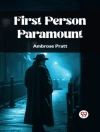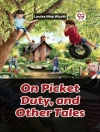Defined less by geography than by demographic character, Block, Kansas, in many ways exemplifies the prevalent yet seldom-scrutinized ethnic, religion-based community of the rural midwest.
Physically small, the town sprang up around four corners formed by crossroads. Spiritually strong and cohesive, it became the educational and cultural center for generations of German-Lutheran families.
Block provided a religious and cultural oasis-a welcome transition for German-Lutheran immigrants faced with a new language and unfamiliar customs. Yet the tight bond between an ethnic society and a religion that shunned Americanism and the English language paradoxically slowed the transition and maintained a culturally isolated community well into the twentieth century.
In Life at Four Corners, Carol Coburn analyzes the powerful combination of those ethnic and religious institutions that effectively resisted assimilation for nearly 80 years only to succumb to the influences of the outside world during the 1930s and 1940s. Emphasizing the formal and informal education provided by the church, school, and family, she examines the total process of how values, identities, and all aspects of culture were transmitted from generation to generation.
Open access edition funded by the National Endowment for Humanities and the Andrew W. Mellon Foundation Humanities Open Book Program.
Jadual kandungan
List of Maps and Illustrations
Acknowledgments
Introduction
1. Community Overview
2. Church
3. School
4. Family
5. The Outside World
6. At War with Germany
Conclusion
Note on Sources
Notes
Bibliography
Index
Mengenai Pengarang
Carol Coburn is professor emerita of religious studies and women’s and gender studies at Avila College. She is the author of Spirited Lives: How Nuns Shaped Catholic Culture and American Life, 1836–1920.












